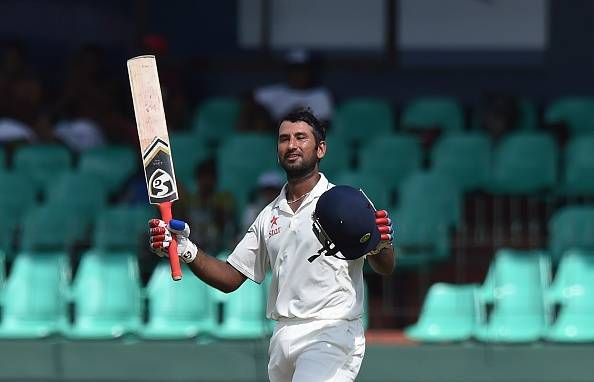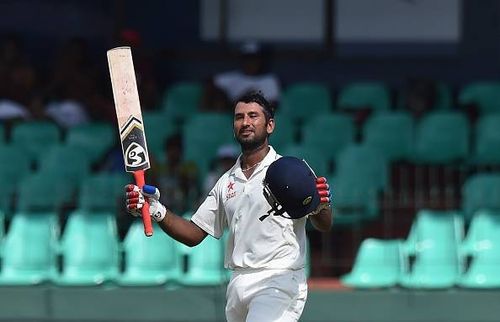
Cheteshwar Pujara reveals the lesson he got from Virender Sehwag

Cheteshwar Pujara is known as a Test cricketer for his ability to bat for long periods. The Saurashtra batsman has a lean patch during India’s 2014 tour of England and the subsequent Australian tour of 2014-15, but he bounced back strongly by playing a major role in India’s Test series win over Sri Lanka.
Now, he is eying the Ranji Trophy title for Saurashtra and a place in the national team for the shorter formats.
Haven't played that many games for India in shorter formats
When asked to comment on people’s perception that he can’t play in shorter formats, he said the he didn’t have much opportunity to prove himself in limited-overs cricket. He said, “They start assuming things because I haven't played that many games for India in shorter formats. You can't say that I can't.
“I have just played three or four ODIs. If you look at other players, they have got more opportunities. It's a matter of time.”
He also disclosed his plans for getting into the shorter formats. He said, “With more runs in domestic format this season and possibly in the IPL, you never know (how) things can change. I have spoken to big players (like) Rahul (Dravid) Bhai and Sachin (Tendulkar) Paaji and they also told me that there's nothing wrong with my technique.
“They also believe that I can play the other formats of the game. I am working on few other shots which have already given me the results in domestic T20. Going ahead, if I have more shots, it will be an advantage.”
Sehwag told me to express myself and be fearless
Pujara played last year’s IPL for Kings XI Punjab alongside Virender Sehwag. He speaks about the approach in T20 when he shared the dressing room with Sehwag.
He said, “He told me that you have all the shots in the book. It's all about expressing yourself in the middle and be fearless. He told me to work on a few areas and that's what I'm doing in ODIs and T20I.”
Pujara looked surprisingly aggressive in the Test series against South Africa. When asked from where the aggression came, he said, “It comes naturally. You assess the situation.
“Sometimes you look to target a particular bowler where you can feel you can accelerate and put pressure on the opposition and score around 100 runs in a session. You analyse the situation and plan accordingly.”